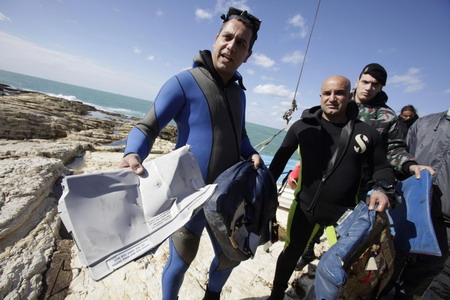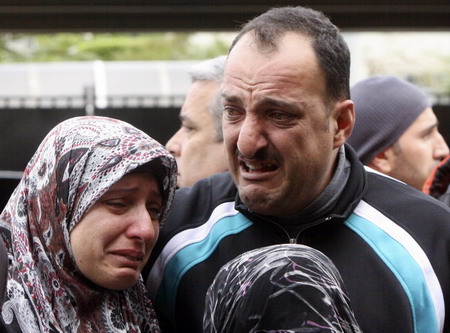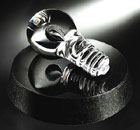Global General
Pilot in Beirut crash made 'fast and strange turn'
(Agencies)
Updated: 2010-01-27 09:12
 |
Large Medium Small |
|
 Lebanese Civil Defence workers hold the remains of seats and tables from the Ethiopian Airlines plane which crashed, after retrieving them from the sea at a beach in Beirut January 26, 2010. [Agencies] |
Crews have pulled bodies from the sea; the numbers reported so far range from a dozen to more than 20. Several officials have revised their numbers, saying they miscounted.
Pieces of the plane and other debris were washing ashore, and emergency crews pulled a large piece of the plane, about 3 feet (1 meter) long, from the water. A recovery team member, Safi Sultaneh, identified it as a piece of a wing.
A senior security official involved in the crash investigation said the black box would provide more definitive answers, but he noted that conditions including the weather are more likely culprits than anyone bringing the plane down on purpose.
"The probability of sabotage in these circumstances is much less than all other probabilities," he said, asking for anonymity because he is not authorized to speak publicly.
But experts said it was too early to rule out anything, even terrorism.
"Quite frankly you can't say that at this stage," aviation safety analyst Chris Yates said. "It's a political statement at this point. You can't rule out anything."
Patrick Smith, a US-based airline pilot and aviation writer, said there were many possible causes for the crash.
"Had the plane encountered extreme turbulence, or had it suffered a powerful lightning strike that knocked out instruments while penetrating strong turbulence, then structural failure or loss of control, followed by an in-flight breakup, are possible causes."
The Lebanese army and witnesses say the plane was on fire shortly after takeoff. A defense official also said some witnesses reported the plane broke up into three pieces.
|
 Relatives of passengers who were aboard an Ethiopian Airlines plane which crashed into the Mediterranean sea on Monday morning, cry as they arrive at Beirut international airport January 25, 2010. [Agencies] |
In the southern Lebanese village of Hanaway, hundreds of people gathered in the mansion of Hassan Tajeddine, 49, one of the few people whose bodies have been identified from the crash.
Tajeddine, a father of three boys and a girl, comes from a wealthy and influential Shiite family in southern Lebanon. Several prominent members of Lebanon's Shiite Hezbollah group were attending the funeral.
"Why did they allow this plane to talk off?" asked Hussein Saad, the man's uncle.
Tajeddine's coffin was covered in black cloth with writings from the Muslim holy book.
At the Government Hospital in Beirut, the mood was somber Tuesday for families gathered outside hoping for news of loved ones.
"We don't have much hope left," said Adnan Bahr, a relative of 24-year-old Yasser al-Mahdi. "They're all gone with the sea."











